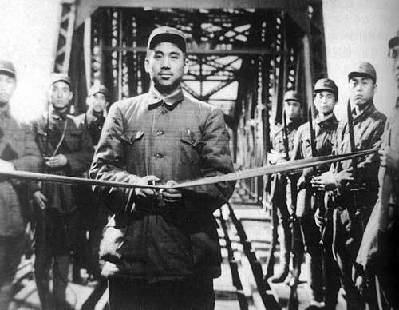| |
The founding of the People’s Republic of China in 1949 marked a turning point in China’s film industry. Over the past six decades, New China’s film industry has achieved marked progress, expanding from small to big, from incomplete to complete, from weak to mature, and from relatively closed to fully opened up. In the pursuit of this noble cause, the Chinese film industry has gained broad prospects under the great care of the Party and the government.
The Chinese film industry has made new explorations in subject matters in film making. It has also considerably elevated its overall artistic levels. Since the country set things to right in political and ideological lines, and implemented the reform and opening up policy after the Third Plenary Session of the 11th Central Committee of Communist Party of China, the mass of film industry workers boldly emancipated their minds, and strived to open up their visions. They absorbed advanced film art and technological achievements from other countries, and facilitated tremendous progress in the Chinese film industry. A large number of outstanding films came out, allowing the Chinese film industry, little known previously, to gradually edge into the rank of major film producers in the world.
Film is an international integrated art. It is also an effective tool promoting mutual understanding and exchanges among people of all countries. New China’s film exchanges with the outside world has developed and expanded along with the country’s cultural exchanges with other countries. In the past two decades in particular, in order to make the world understand China better, and introduce China to the outside world, the Chinese film industry has launched international exchange activities in a well-planned way through diversified procedures and channels. They have played a significant role in promoting friendship between the Chinese people and people of the world, and flourishing the Chinese film undertakings. Many outstanding Chinese films, shot after reform and opening up, have won prizes at key international festivals. They are gems dedicated by Chinese film makers to the world film treasure house. They also work as bridges communicating the souls of Chinese people and people from other parts of the world. A lot of film companies and film artists from other countries have come to China for cooperation. Chinese films are introduced to the outside world, shown in many other countries and regions. All these remind us that the Chinese film industry is prospering with each passing day, and Chinese film exchanges with the outside world are just going ahead with full steam.
Chapter One China’s film exchanges with the outside world from 1949 to 1966
The modern Chinese film industry embarked on the journey of socialist construction with the establishment of the Central Film Administration in April 1949, and the subsequent shooting of the first long feature movie The Bridge by the Northeast Film Studio (the predecessor of Changchun Film Studio). In the 17 years thereafter, China established a complete set of film enterprises and institution mechanism under the administration of the government. It had a professional task force of 500,000 staff workers, which produced nearly 600 feature movies and documentaries of stage arts with national styles and characteristics.
I. Win international prizes
The Bridge, the first feature movie produced by New China in 1949, presented for the first time the Chinese working class as masters of the society, in contrast to the previous images of the oppressed, exploited and pitied. It unveiled a new page in the history of the New China film industry. The feature movies that were produced in subsequence, including White Haired Girl, Steel Soldier, Shangrao Concentration Camp, New Heroes And Heroines, Banner over Green Cliff, Children of China, Zhao Yiman, From Victory to Victory, Reconnaissance Across the Yangtze, and the newsreels Mighty Army across the Yangtze, Red Flag Rouse the Serf fascinated the audiences with new thoughts, characters and new look of the Chinese nation.

The Bridge
Children of China, a film written by Yan Yiyan and directed by Ling Zifeng and Zhai Qiang, composed an ode to the heroes with plain and genuine performances and exciting plots. In 1950, it was awarded the Struggle for Freedom Prize at the 5th Karlovy Vary International Film Festival in Czechoslovakia. It was the first prize in the New China film industry, a pioneer for modern Chinese films to win international awards. Shi Lianxing, who starred Zhao Yiman, was the first Chinese actress to win an international prize in New China. They made a good beginning. Statistics show that from 1950 to 1966, Chinese feature movies and documentaries of stage arts won 26 prizes at international film festivals.
|
|
